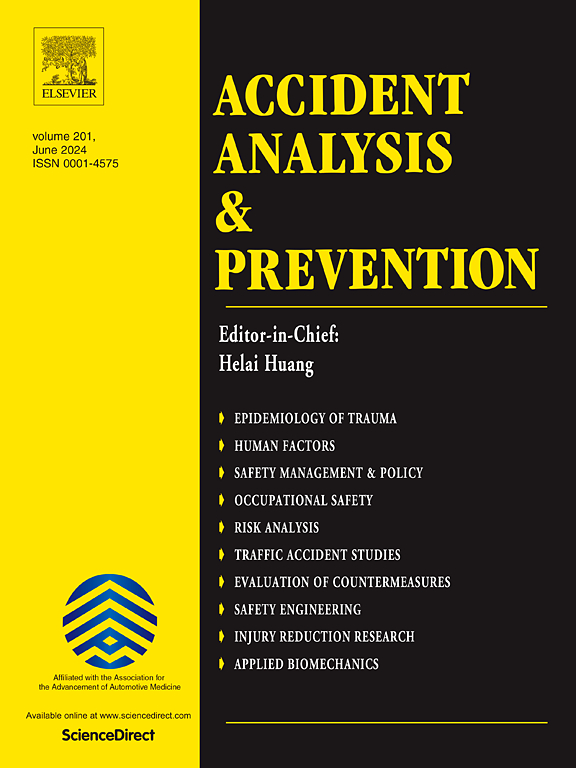The Halo effect in airport terminals: how wayfinding experiences influence emergency preparedness through perceived reliability
IF 6.2
1区 工程技术
Q1 ERGONOMICS
引用次数: 0
Abstract
As critical infrastructure in global transportation networks, airport terminals with high passenger throughput require effective safety management to ensure passenger safety and operational efficiency. Recognizing the importance of a human-centric approach, this study delves into wayfinding signage (WS) that facilitates routine navigation for passengers in airport terminals and emergency exit signage (EES) that guides evacuations during emergencies. We hypothesize that the passengers’ experience in different WS performance criteria—visibility, legibility, consistency, and correctness—affect passengers’ perceived reliability of it, which, by virtue of the Halo Effect, subsequently influences their perceived reliability of EES and willingness to comply with EES. To validate the hypotheses in our research model, we designed a targeted questionnaire and collected 397 valid responses from airport terminals in four major cities in China. The results substantiate the presence of the Halo Effect and reveal the significant impact of certain dimensions of WS performance criteria on passengers’ reliability perception and their willingness to comply. The findings emphasize the mediating role of perceived reliability in converting environmental design into behavioral intentions and actions, offering theoretical insights and practical recommendations for optimizing WS design to improve routine services and emergency preparedness in airport management. It also advances the understanding of reliability perception mechanisms in public spaces and offers practical significance for improving public safety through everyday efforts.
机场航站楼的光环效应:寻路经验如何通过感知可靠性影响应急准备
旅客吞吐量大的机场航站楼作为全球交通网络的关键基础设施,需要有效的安全管理,以确保旅客安全和运营效率。认识到以人为本方法的重要性,本研究深入研究了在机场航站楼为乘客提供日常导航的寻路标志(WS)和在紧急情况下指导疏散的紧急出口标志(EES)。我们假设乘客对不同WS绩效标准(可视性、易读性、一致性和正确性)的体验会影响乘客对WS绩效标准的感知可靠性,进而通过光环效应影响乘客对EES的感知可靠性和遵守EES的意愿。为了验证我们研究模型中的假设,我们设计了一份有针对性的问卷,并在中国四个主要城市的机场航站楼收集了397份有效问卷。研究结果证实了光环效应的存在,并揭示了WS性能标准的某些维度对乘客可靠性感知和遵守意愿的显著影响。研究结果强调了感知可靠性在将环境设计转化为行为意图和行动中的中介作用,为优化WS设计以改善机场管理中的日常服务和应急准备提供了理论见解和实践建议。这也促进了对公共空间可靠性感知机制的理解,对通过日常努力提高公共安全具有现实意义。
本文章由计算机程序翻译,如有差异,请以英文原文为准。
求助全文
约1分钟内获得全文
求助全文
来源期刊

Accident; analysis and prevention
Multiple-
CiteScore
11.90
自引率
16.90%
发文量
264
审稿时长
48 days
期刊介绍:
Accident Analysis & Prevention provides wide coverage of the general areas relating to accidental injury and damage, including the pre-injury and immediate post-injury phases. Published papers deal with medical, legal, economic, educational, behavioral, theoretical or empirical aspects of transportation accidents, as well as with accidents at other sites. Selected topics within the scope of the Journal may include: studies of human, environmental and vehicular factors influencing the occurrence, type and severity of accidents and injury; the design, implementation and evaluation of countermeasures; biomechanics of impact and human tolerance limits to injury; modelling and statistical analysis of accident data; policy, planning and decision-making in safety.
 求助内容:
求助内容: 应助结果提醒方式:
应助结果提醒方式:


